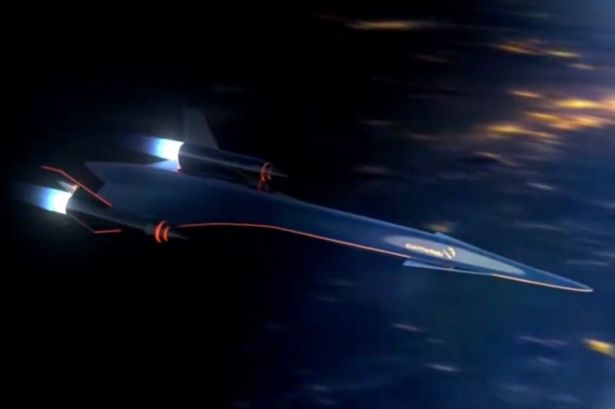The realm of supersonic flight, once epitomized by the iconic Concorde, is experiencing a resurgence of interest and development, with the potential to revolutionize air travel once again. While the Concorde, a symbol of technological achievement and luxurious travel, met its demise due to a combination of economic and safety concerns, the dream of faster-than-sound passenger flights hasn’t faded. Now, a new generation of supersonic jets is on the horizon, promising even greater speeds and potentially more viable commercial prospects. One such example, a hypersonic concept capable of travelling four times the speed of sound and twice that of the Concorde, hints at the breathtaking possibilities of future air travel. The involvement of a Chinese-based company in this venture adds another layer of intrigue, suggesting a shift in the global landscape of aviation innovation.
The allure of supersonic flight lies in its dramatic reduction of travel time, shrinking the world and connecting distant destinations with unprecedented speed. The Concorde, which cruised at Mach 2, could traverse the Atlantic Ocean in a mere three and a half hours, a fraction of the time taken by conventional subsonic aircraft. However, its operational costs were exorbitant, leading to high ticket prices that limited its accessibility to a privileged few. Furthermore, the tragic crash of Air France Flight 4590 in 2000, coupled with concerns about noise pollution, contributed to the eventual grounding of the Concorde fleet. The new era of supersonic flight aims to address these challenges by incorporating advanced technologies and design principles to improve efficiency, reduce noise, and enhance safety. The objective is to create a sustainable and commercially viable supersonic transport system that can benefit a wider audience.
The development of a hypersonic jet with the potential to travel at Mach 4 represents a significant leap forward in aviation technology. This remarkable speed would theoretically enable a flight from New York to London in just over an hour, dramatically transforming long-haul travel. The challenges associated with such high speeds, however, are immense. These include managing the intense heat generated by air friction at hypersonic velocities, developing robust and lightweight materials capable of withstanding extreme stresses, and designing efficient propulsion systems capable of generating the required thrust. Overcoming these technical hurdles requires significant investment in research and development, collaboration between aerospace engineers and scientists, and a commitment to pushing the boundaries of what is currently possible.
The involvement of a Chinese-based company in the pursuit of a Concorde successor is indicative of the growing ambition and investment in aerospace innovation within China. While specific details about the company and its project remain somewhat scarce, their focus on supersonic technology highlights the global race to dominate the next generation of air travel. China’s burgeoning economy and its growing demand for air travel create a strong incentive to invest in advanced aviation technologies. The emergence of Chinese companies in this field could potentially reshape the competitive landscape of supersonic aircraft development and potentially lead to a new era of international collaboration in the pursuit of faster, more efficient, and more accessible air travel.
The potential implications of the successful development of a new generation of supersonic aircraft are far-reaching. Beyond the obvious benefits of reduced travel time, the impact on global commerce, tourism, and cultural exchange could be transformative. Faster travel times could facilitate closer business ties between countries, enhance international trade, and foster greater collaboration between researchers and academics across the globe. The ability to travel quickly and efficiently to distant destinations could also revolutionize the tourism industry, opening up new opportunities for cultural exploration and exchange. However, it is crucial to consider the environmental impact of supersonic flight, particularly in terms of noise pollution and emissions. Sustainable practices and environmentally conscious design will be essential to ensure that the benefits of this technology are not offset by negative consequences for the planet.
In conclusion, the race to develop a successor to the Concorde is a testament to the enduring human desire to push the boundaries of speed and connectivity. While significant challenges remain, the advancements in aerospace technology and the growing investment in this field hold the promise of a future where supersonic flight becomes a more accessible and commonplace mode of transportation. The involvement of Chinese companies signifies a shift in the global dynamics of aviation innovation and underscores the importance of international collaboration in achieving this ambitious goal. As the development of these next-generation supersonic aircraft progresses, it will be crucial to address the environmental and economic considerations to ensure a sustainable and beneficial future for high-speed air travel.














